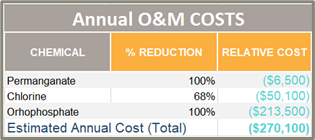April 17, 2023
In 2022, the Environmental Protection Agency (EPA) announced new rules that require the removal of service pipes in cities nationwide that contain lead and copper. Lead pipes, primarily used in infrastructure through the first half of the twentieth century, can have negative long-term impacts on human health and water quality. This new rule will help communities support sustainable water infrastructure that provides safe drinking water to all Americans.
State regulatory agencies are tasked with enforcing and administering funds for this initiative. In Minnesota, the Minnesota Department of Health (MDH) is the managing agency. This is a significant undertaking for many cities, and it is important that municipalities understand how to navigate and comply with the new rules.
What do cities need to know to ensure compliance with this new regulation? Here are three things to consider.
There will be funding to help cities comply with these new mandates. While updating water infrastructure and removing lead pipes can be an expensive task, cities have the opportunity to access grants to help fund this process. The federal Infrastructure Investment and Jobs Act passed in 2022 set aside dollars for cities to help support service line updates. Grant funding can also be flexible to meet community needs, from paying for community awareness campaigns to self-testing lines to taking lead pipe inventory and more.
Cities must inventory their pipelines by 2024. By October 2024, all cities must complete the inventory of all service pipes in their community. This means cities need to act now. Meeting this deadline requires a multi-pronged approach that includes mapping out all the service lines in a city, determining which contains lead, and finally creating and implementing a plan for the removal and replacement of the lead pipes.
Data is key, and that means educating and working with residents. Mapping pipeline data is a big undertaking for many communities, especially as many cities will need to go beyond historical records to map out their service lines, that’s why resident participation is important. Communities should leverage GIS data to help build and map which service lines are at risk of having lead components. Online mapping tools and tips can help residents identify lead service lines and report back to the city. The more user-friendly testing and data collection is, the more accessible it is for the public.
What’s more, because water quality issues more commonly impact disadvantaged and low-income communities, 49% of program funds are directed toward traditionally underserved communities to improve drinking water quality. Educating and engaging with these neighborhoods and residents will be important for cities, and the focus should be on raising awareness and helping with testing.
WSB offers all the services for cities to navigate and implement the new regulations, including grant proposals, inventory, mapping, and identification. We assist cities throughout every step of the process, including:
- Establishing a database that meets the MDH reporting requirements
- Creating and implementing a public engagement plan to educate and build community awareness
- Gathering and tracking data by leveraging Esri Lead Service Line Inventory software
- Planning and implementing a lead pipe replacement program
- Building a comprehensive report documenting the lead resolution to MDH by October 2024
- Identifying and applying for grants to support community compliance and pipeline updates
Service pipelines supply drinking water to homes, businesses, and schools. Safe drinking water and sustainable infrastructure are critical to healthy communities, and while this new rule will be a significant undertaking, it also provides meaningful opportunities for communities to make much-needed improvements.























